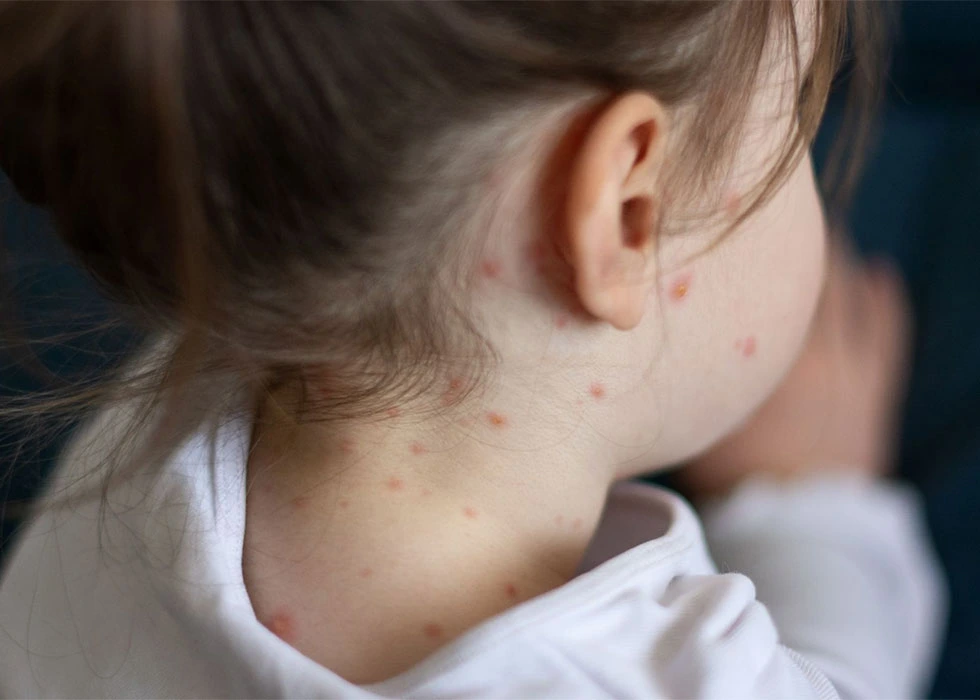
Measles: Symptoms, Risks, Treatment, and Prevention
- August 23, 2025
- 1 Like
- 18 Views
- 0 Comments
Overview
Measles, also known as rubeola, is a highly contagious viral infection that spreads through the air and by direct contact with infected respiratory droplets. Before the measles vaccine became part of routine childhood immunization, the disease caused millions of deaths worldwide. Thanks to vaccination, measles has been largely eliminated in many regions, including the United States, but outbreaks still occur, especially in communities with low vaccination rates.
Measles is more than just a childhood rash. While most people recover within 10 to 14 days, the infection can lead to serious complications such as pneumonia, encephalitis (brain inflammation), or even death. Children under five, adults over twenty, pregnant people, and those with weakened immune systems are at the highest risk of severe illness.
How Measles Spreads
The measles virus lives in the mucus of the nose and throat. It spreads when an infected person coughs, sneezes, talks, or even breathes. The droplets can linger in the air and on surfaces for up to two hours.
One of the reasons measles spreads so quickly is that a person is contagious before they even know they are sick — about four days before the rash appears and up to four days afterward. In fact, if one unvaccinated person has measles in a room of unvaccinated people, nine out of ten others are likely to become infected.
Symptoms
Measles symptoms usually develop in stages over two to three weeks:
- Incubation (10–14 days): After exposure, there are no visible symptoms during this period.
- Initial signs: The first symptoms are a high fever, cough, runny nose, sore throat, and red, watery eyes. Within two to three days, tiny white spots known as Koplik spots may appear inside the mouth.
- Rash phase: About three to five days after symptoms begin, a blotchy red or purple rash develops, starting at the hairline and spreading downward over the face, neck, torso, arms, and legs. The fever often spikes as the rash spreads. The rash gradually fades from the top of the body downward.
Other symptoms may include fatigue, headache, muscle aches, and in some cases, diarrhea or vomiting. The rash does not usually itch but can look different depending on skin tone, appearing red on lighter skin or darker purple/brown on deeper skin tones.
Complications
Although most people recover, measles can cause severe and sometimes life-threatening complications. Common issues include ear infections, bronchitis, laryngitis, or diarrhea. More serious complications may involve pneumonia, encephalitis, or long-term nervous system disorders such as:
- Measles inclusion body encephalitis (MIBE): Brain inflammation that can occur days to years later, often in immunocompromised individuals.
- Subacute sclerosing panencephalitis (SSPE): A rare, fatal disease of the central nervous system that may develop 7–10 years after infection.
- Immune amnesia: Measles can wipe out immune memory, leaving children vulnerable to infections they had previously developed immunity against.
Pregnant women who contract measles are at risk of miscarriage, premature birth, or having a baby with low birth weight. Globally, measles remains a cause of preventable childhood deaths, particularly in areas with poor access to vaccines and vitamin A deficiency.
Diagnosis
Doctors usually diagnose measles by reviewing symptoms, particularly the rash and Koplik spots. To confirm, they may use blood tests, throat or nasal swabs, or urine samples to detect the virus. Because measles can resemble other viral illnesses, accurate testing is often necessary during outbreaks.
Treatment
There is no cure for measles. Treatment focuses on relieving symptoms and preventing complications. This includes rest, hydration, fever management with acetaminophen or ibuprofen, and dim lighting for eye discomfort.
Doctors may recommend:
- Vitamin A supplements: Especially for children, as deficiency increases the risk of severe illness.
- Antibiotics: Only if bacterial complications, such as pneumonia or ear infections, develop.
- Immune globulin injections: For infants, pregnant women, or immunocompromised individuals exposed to measles, this may reduce severity if given within six days of exposure.
- Post-exposure vaccination: Receiving the MMR vaccine within 72 hours of exposure can prevent or lessen the illness.
Hospitalization may be required for severe cases, particularly when complications like pneumonia or encephalitis arise.
Prevention
Vaccination is the most effective way to prevent measles. The measles vaccine is typically given as part of a combination vaccine:
- MMR (measles, mumps, rubella)
- MMRV (measles, mumps, rubella, varicella)
The CDC recommends two doses for full protection: the first at 12–15 months and the second at 4–6 years of age. Two doses are about 97% effective. In special cases, infants as young as 6 months may receive the vaccine if traveling to areas with outbreaks.
Most adults vaccinated in childhood are protected for life, but some may need a booster if they received earlier versions of the vaccine or only one dose.
Importantly, the MMR vaccine is safe. Despite myths, extensive research has confirmed that there is no link between the vaccine and autism. Side effects are usually mild, such as fever, rash, or temporary joint pain.
Outlook
Measles generally lasts 10–14 days, but complications can extend recovery or cause long-term effects. While measles has been eliminated in the U.S. since 2000, outbreaks continue to occur when unvaccinated individuals bring the virus from abroad. To maintain herd immunity and prevent outbreaks, over 90–95% of the population needs to remain vaccinated.
If you suspect you or your child has measles, isolate immediately and contact your healthcare provider. Quick medical guidance can help manage symptoms and protect others from infection.


Leave Your Comment